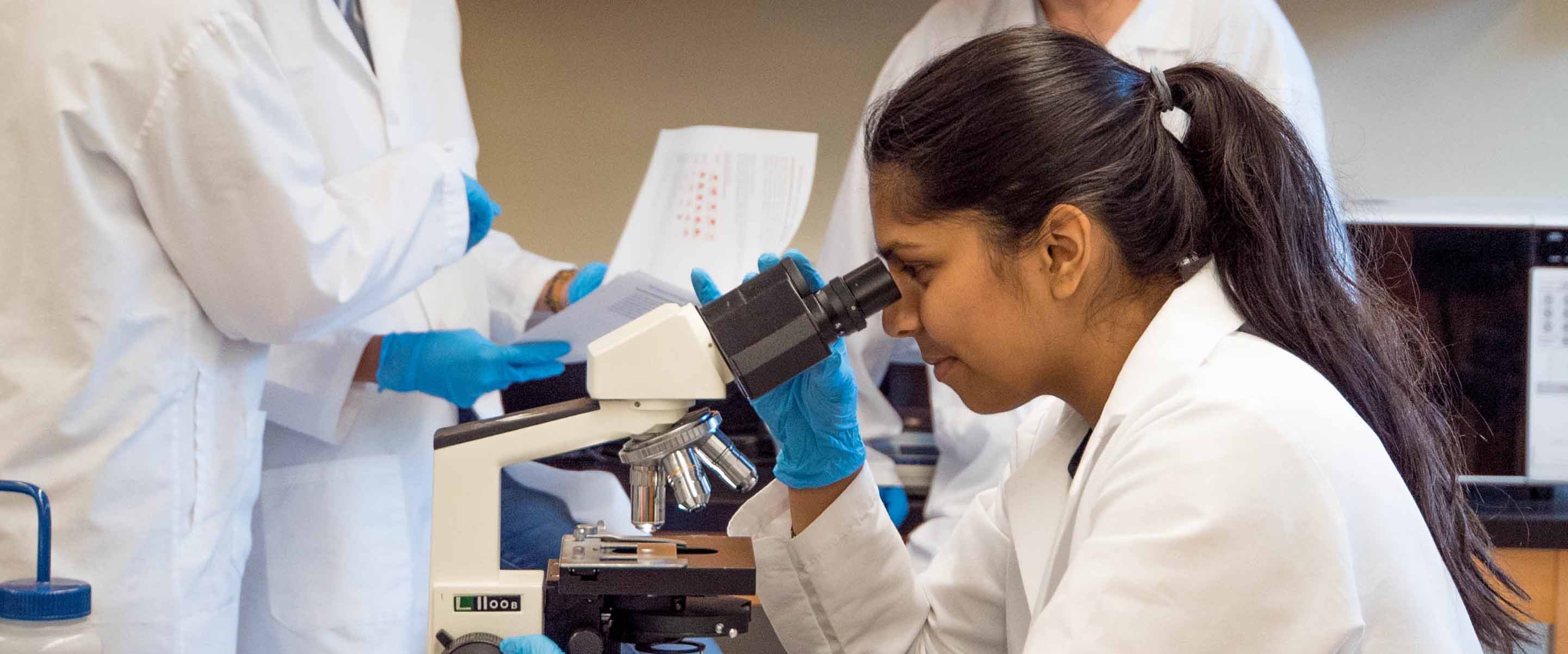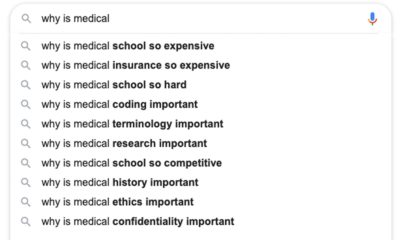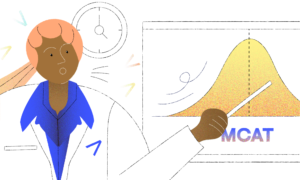How to Succeed In Genetics: Study Hacks for Pre-Meds
Genetics is one of those pre-med required courses that tends to wreak the most havoc. Instead of panicking at the first sign of confusion, follow our tips for finding success in your genetics class.
Do I really NEED to take genetics?
Genetics: G, T, C, but how do you get the A? Sometimes it feels like there’s DN-o way (last pun, I promise).
If you’re on the pre-med track, you have probably been preparing yourself for the infamous courses that everyone warns you about. Organic Chemistry probably tops the list, but genetics is high up there as well. While not necessarily known as a typical pre-med “weed out class,” there is simply a lot of information to remember. After all, humans alone have 24,000 genes in our genomes. Don’t worry, you won’t have to know all of them!
According to the MSAR, however, 80% of medical schools require or recommend that you have taken genetics as part of your pre-med requisite courses. So, if you were thinking of writing genetics out of your course planning, you might want to reconsider, and prepare yourself to study hard with the tips below.
After working on my university’s genetics teaching team, I’ve accumulated some tips for learning the subject. In this article, I’m going to explain what’s different about genetics (and why it’s so hard to master). Then, I will discuss how you can best succeed.
What’s different about genetics?
In high school, biology required a lot of rote learning. For example, we repeated “the mitochondria is the powerhouse of the cell” until we knew it cold. We memorized the chambers of the heart, the organelles and their functions, and the fact that DNA encodes genetic information. However, this reliance on memorization disappears in collegiate biology, and especially in genetics.
I’m hearing a few “but I learn by memorization!” calls from the audience.
Well, I have two pieces of good news for you: 1) you can always learn new study habits, and 2) I’m about to teach them to you.
What takes the place of rote memorization, you ask? There are two major skills that will be very important in your study of genetics:
- Problem solving
- Application of concepts
Another aspect of genetics that is fairly unique is its emphasis on application and connection.
Problem Solving in Genetics
As Dr. Tony Griffiths presented at the International Congress of Genetics, the subject requires extensive problem solving. Many students understand what is said in class, but struggle on the exam. Why? In class, the professor explains each answer, luring some students into a false sense of confidence. “I understood exactly what the professor was saying, so I’ll be fine on the exam,” you might think to yourself. While it’s great that you understand what’s taught in class, keep in mind that problems are usually comprehensible when they’re explained; it’s much harder to solve them yourself. If your professor explains the rationale for an answer, it will seem intuitive. It is an entirely different matter to create your own rationale, and that is what you have to do on exams.
Study Hack: Become the professor. If you can teach someone else the material in your own words, you do not need to memorize things word for word. Instead, you will be fully grasping the bottom line of the lessons. Start a study group and take turns teaching each other the lessons!
Application of Concepts
Another aspect of genetics that is fairly unique is its emphasis on application and connection. Many of my favorite questions begin with “On an alien planet….” The idea is that, to understand genetics, you need to be able to apply it. This is why passively listening in class doesn’t cut it; it’s vital to not only know what was discovered, but how it was discovered and proven. This type of scientific thinking will allow you to do well in class, and moreover, to be a better critical thinker and future doctor.
Study Hack: Think of analogies that directly relate to what you are studying. Similar to the first hack, if you can describe a concept from your lesson using an entirely different example, you can be sure that you have a firm grasp on the information, and will be able to apply it to whatever example your professor chooses to (try to) stump you with on the exam.
So now what?
It turns out that the two study hacks mentioned briefly above are actually part of a theory that breaks down exactly how the mind goes from hearing information, to processing it, to finally using that information to investigate questions and create educated answers. We’ll dig into this idea a little deeper using Bloom’s Taxonomy. Benjamin Bloom, the researcher responsible for publishing his findings on the mastery of information, worked throughout his life on different learning taxonomies, and published the “Taxonomy of educational objectives: The classification of educational goals” in 2001. This then became the widely-used system known as Bloom’s Taxonomy.
Even though it is a relatively new theory, less than 20 years old, it is already a widely-accepted theory in education. According to it, many of us are experienced in the “remember” category: memorizing, defining, etc. “Apply,” however, is two levels above. Just above application is “analyze” (drawing connections). Below both is “understanding”; this is why simply understanding what is said in class is insufficient. In order to perform well on an exam that tests application and analysis, you need to have more than the ability to recall (“remember”) or discuss (“understand”) an idea.
But there is good news! Bloom’s Taxonomy provides a clear metric for the knowledge you need to succeed in genetics. Because of this, you can tailor your studying. Below, I explain three genetics tips based on Bloom’s Taxonomy that are supplemented by my experience as a genetics teacher.
Tip 1: Ask questions, debate answers
By asking questions, you appraise your knowledge and the material, looking for gaps or contradictions in both. This employs the “analyze” category: the same category used on the exam. Before emailing your professor, try debating answers with friends. This will force you to use the “evaluate” category to appraise and argue points. Based on Bloom’s Taxonomy, this will better equip you to employ learning categories like “apply” and “analyze.”
This process of coming up with questions, and then taking the time to also come up with possible solutions before presenting them to your peers or professors, demonstrates a growth mindset. The idea that you are not only producing questions, but also taking the time to decipher what you think might be the answer will not only show that you are actively thinking about the material, but will also save your professor time when answering you. If any of your “guesses” ends up being correct, you will better trust your own ability to solve problems. (AKA not as much second guessing yourself when taking the exam.)
How do you start implementing this tactic? First, study the material on your own. It’s important to “remember” and “understand” before you climb to the top of the pyramid. Then, get together with a study group. Review your notes, and look for ambiguous or unclear points. Ask a question, then debate the answer with your classmates. If you can come to a consensus, that’s great! If not, email your professor or teaching aid. Make sure to also list out the possible solutions that you and your peers discussed. After receiving the answer from one of them, return to the material and discuss how the new information relates to it and clarifies it.
Tip 2: Study with teaching aids
Because genetics is often a large class, many schools will offer additional teaching support beyond the professor. If one-on-one (or small group) supplemental instruction is available, this provides an opportunity for individualized learning. Definitely take advantage of this. When in a study session with the aid, try pretending like you’re the professor, and let the instructor ask you questions about the material. The instructor will know where most students lack understanding and will focus attention there. When you give your answer, you’ll be using the “evaluate” category to select and defend your response.
If the only available teaching resources are the professor and other large group resources, you can practice the same activity with a fellow student. Try anticipating questions and posing them to each other. Answer, then evaluate your answer. Not only will this allow you to practice for the exam and understand the material better, you’ll learn the skills necessary to communicate medical science, which will be an asset as a doctor.
Try pretending like you’re the professor, and let the instructor ask you questions about the material. The instructor will know where most students lack understanding and will focus attention there. When you give your answer, you’ll be using the “evaluate” category to select and defend your response.
Tip 3: Practice research-based questions
Ask questions and pose hypotheses. Identifying questions involves “analyzing,” as you look for relationships within the material. Formulating hypotheses utilizes the skills of the “create” category. This is not only an aid in your learning, but a great way to practice research skills.
Peruse your material for areas of unclarity. Are causal mechanisms unclear? Does an intermediate step (or lack thereof) confuse you? Maybe two principles seem to contradict each other. These are real research questions, and uncovering them helps practice and demonstrate deep knowledge of the material. This inquisitive mindset is how medicine advances!
Further, searching for apparent inconsistencies will give you the skills to synthesize material for all sorts of biological disciplines. As an added bonus, you can ask your professor these questions, and maybe even begin researching them together!
Takeaways
In genetics class, as we’ve discussed, memorization is not sufficient; higher levels of learning, such as problem-solving and application are necessary. Bloom’s Taxonomy delineates the types of understanding that are needed to succeed. With the pyramid in mind, use my three study tips to help you succeed in genetics:
- Debate answers to questions
- Practice with teaching aids, acting as the teacher yourself
- Try to think of, and answer, research questions
If you combine these three suggestions with other psychologically proven studying tactics, you’ll be on your way to an A in no time. Furthermore, these tips will not only help you learn the mindset of genetics, but will also pave the way for your future career as a doctor. Success is in your genes!




